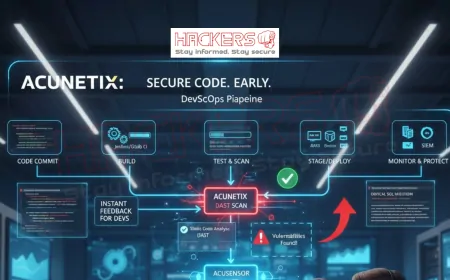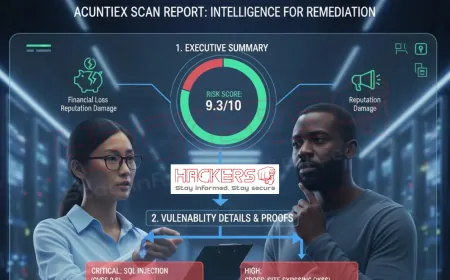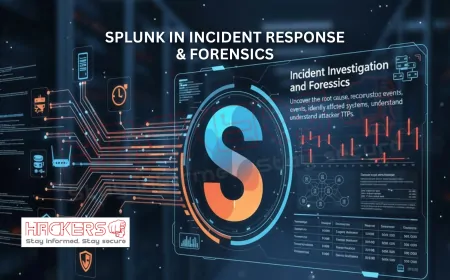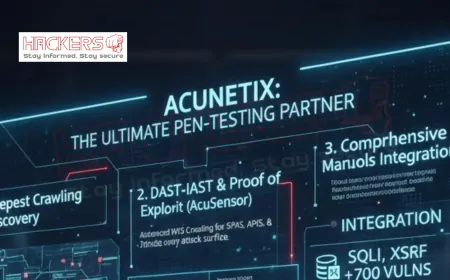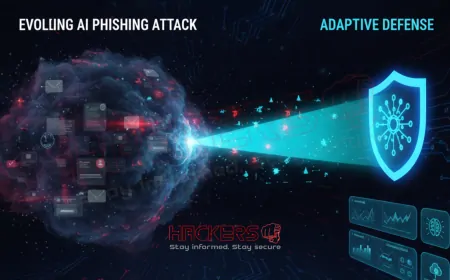How Nikto Helps Beginners Learn Web Application Security
You don’t need a PhD in cybersecurity to start learning web security. You just need curiosity, a laptop, and one simple tool: Nikto. For over 20 years, Nikto has been the quiet mentor that turns complete beginners into confident security learners. Imagine opening a terminal, typing a single command, and watching real vulnerabilities appear on your screen. No complex setup. No expensive software. Just you, your browser, and a free tool that speaks plain English. In this beginner-friendly guide, we’ll show exactly how Nikto teaches you web security from day one. You’ll learn by doing: scan a test server, read the output, fix the issues, and grow your skills. No jargon. No fear. Just practical, hands-on learning that sticks.

Table of Contents
- Why Nikto Is Perfect for Beginners
- Step 1: Set Up Your Learning Lab
- Step 2: Run Your First Nikto Scan
- Step 3: Understand What Nikto Tells You
- Step 4: Learn from Common Findings
- Step 5: Fix the Problems You Find
- Step 6: Build a Learning Path with Nikto
- Safe Places to Practice with Nikto
- Essential Nikto Commands for Learning
- Nikto Command Cheat Sheet Table
- Next Steps After Nikto
- Conclusion: Your Security Journey Starts Here
Why Nikto Is Perfect for Beginners
Nikto was built for learning. Here’s why it works so well:
- Free and open source: No cost, no license, no barriers.
- One-line commands: Type
nikto -h site.comand go. - Clear output: English messages, not cryptic codes.
- Real results: Finds actual issues, not just theory.
- Safe to run: Read-only. No risk of breaking anything.
- Teaches HTTP fundamentals: Headers, methods, status codes.
Beginner win: You’ll see a vulnerability in under 60 seconds. Instant feedback = fast learning.
Step 1: Set Up Your Learning Lab
Don’t scan real websites. Build your own test environment.
Option 1: Local web server
- Install XAMPP (Windows/Mac) or LAMP (Linux)
- Create
test.php,phpinfo.php, and abackup/folder - Run:
nikto -h http://127.0.0.1
Option 2: Vulnerable apps
- Download DVWA, WebGoat, or Juice Shop
- Run in Docker:
docker run -p 80:80 vulnerables/web-dvwa
Step 2: Run Your First Nikto Scan
Open terminal and type:
nikto -h http://127.0.0.1Watch the magic. In seconds, you’ll see:
+ Server: Apache/2.4.41 + /phpinfo.php: PHP configuration leak + /backup/: Directory indexing found + Over 15 potential issues found
You just learned: Servers leak info. Files shouldn’t be public. Directories need protection.
Step 3: Understand What Nikto Tells You
Nikto speaks in plain language. Let’s decode a real message:
Output:+ /config.bak: Backup file found. May contain passwords.
Translation:
/config.bakis a backup of your config file- Anyone can download it
- It might have database passwords
- Delete it now
Every line teaches a lesson.
Step 4: Learn from Common Findings
Here are the top 5 things beginners discover with Nikto:
- Outdated server: “Apache 2.2.15 is old.” → Learn versioning and patching.
- phpinfo.php: “PHP info leak.” → Never leave debug files live.
- Directory listing: “/uploads/ allows browsing.” → Disable with
Options -Indexes. - Missing headers: “X-Frame-Options not set.” → Add security headers.
- PUT allowed: “File uploads possible.” → Restrict HTTP methods.
Each finding = one security concept mastered.
Step 5: Fix the Problems You Find
Learning sticks when you fix what you break.
Example fix for phpinfo.php:
- Delete the file:
rm /var/www/html/phpinfo.php - Run Nikto again
- See the warning disappear
You just learned: How to secure a server. The value of re-testing. Confidence.
Step 6: Build a Learning Path with Nikto
Use Nikto to level up:
- Week 1: Scan localhost. Fix 5 issues.
- Week 2: Scan DVWA. Learn HTTP methods.
- Week 3: Scan a friend’s test site (with permission).
- Week 4: Write a report of your findings.
- Week 5: Automate scans with cron.
By month 2, you’re thinking like a security pro.
Safe Places to Practice with Nikto
Never scan without permission. Use these instead:
- DVWA – Damn Vulnerable Web App
- WebGoat – OWASP’s training app
- Juice Shop – Modern vulnerable shop
- bWAPP – Buggy Web App
- Your own VM – Safest option
Golden rule: Only scan systems you own or have written permission to test.
Essential Nikto Commands for Learning
Master these 10 commands:
nikto -h site.com– Basic scannikto -h https://site.com– SSL scannikto -p 8080– Custom portnikto -o report.html -Format html– Save pretty reportnikto -Tuning 1– Focus on file checksnikto -update– Get latest checksnikto -list-plugins– See extrasnikto -id user:pass– Basic authnikto -evasion 1– Try to bypass filtersnikto -h @hosts.txt– Scan many sites
Nikto Command Cheat Sheet Table
| Command | What It Does | Learning Goal |
|---|---|---|
nikto -h site.com |
Run default scan | See real issues instantly |
nikto -ssl |
Force HTTPS | Learn SSL basics |
nikto -o file.html |
Save report | Practice reporting |
nikto -Tuning 9 |
Injection checks | Understand input risks |
nikto -update |
Update database | Stay current |
nikto -evasion 3 |
Bypass WAF | Learn detection |
nikto -id u:p |
Basic auth | Test protected areas |
nikto -p 8080 |
Custom port | Scan non-standard apps |
nikto -list-plugins |
Show extras | Explore advanced use |
nikto -h @list.txt |
Scan many | Scale your testing |
Next Steps After Nikto
Once you’re comfortable with Nikto, level up:
- Nmap: Learn network scanning
- OWASP ZAP: Crawl JavaScript apps
- Burp Suite: Manual testing
- SQLmap: Test injection
- TryHackMe / HackTheBox: Guided labs
Nikto is your gateway. These are the next doors.
Conclusion: Your Security Journey Starts Here
Web security isn’t about memorizing CVEs or buying fancy tools. It’s about seeing how the web works, finding where it breaks, and fixing it before someone else does.
Nikto gives you all three, in one command.
Start today:
- Install Nikto
- Scan your local server
- Fix one issue
- Repeat tomorrow
In a month, you’ll look at websites differently. You’ll see the phpinfo.php hiding in plain sight. You’ll notice the missing header. You’ll be the one keeping the internet safer.
And it all started with a simple scan.
Do I need coding skills to use Nikto?
No. Just basic terminal commands. Copy, paste, learn.
Is Nikto safe for my computer?
Yes. It only sends HTTP requests. No malware risk.
Can I use Nikto on Windows?
Yes. Install via WSL, Cygwin, or GitHub build.
Does Nikto teach hacking?
It teaches defense. You learn by finding and fixing flaws.
Is Nikto enough to get a security job?
No, but it’s a strong start. Pair with labs and certs.
Can I scan my own website?
Yes! It’s the best way to learn safely.
Will Nikto break my site?
No. It only reads. Never writes or deletes.
Do I need Kali Linux?
No. Works on Ubuntu, macOS, Windows (WSL).
Can Nikto find login pages?
Yes. It flags /admin/, /login.php, etc.
Is Nikto free forever?
Yes. Open source under GPL.
Does Nikto work on WordPress?
Yes. Finds server issues, not plugin flaws.
Can I save Nikto reports?
Yes. Use -o file.html -Format html.
Should I scan every day?
Yes. New files appear. Old ones return.
Is Nikto part of OWASP?
Yes. Official OWASP project.
Can Nikto scan mobile apps?
No. Only web servers. Use other tools for APIs.
Does Nikto need internet?
Only for updates. Scans work offline.
Can I learn from Nikto output?
Yes. Every line is a lesson in security.
Where can I practice safely?
DVWA, WebGoat, Juice Shop, or your own VM.
Is Nikto good for bug bounties?
Yes. Fast recon for server issues.
Where can I download Nikto?
GitHub: https://github.com/sullo/nikto
What's Your Reaction?







